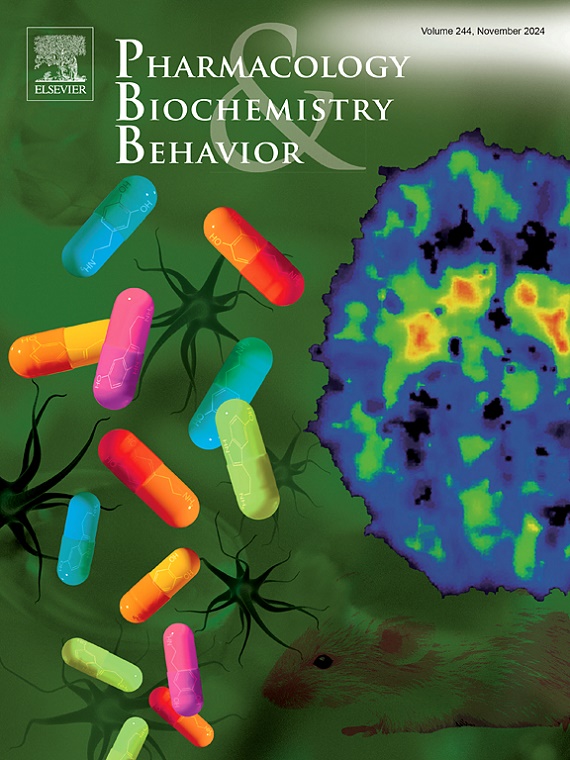阿戈美拉汀联合认知行为疗法对中重度失眠症患者的失眠严重指数和主观痛苦评分比初始剂量氯硝西泮降低:一项准实验研究。
IF 3.3
3区 心理学
Q1 BEHAVIORAL SCIENCES
引用次数: 0
摘要
背景:失眠可由多种因素引起,包括睡眠不足、压力、悲伤、荷尔蒙变化、过量咖啡因、焦虑、精神健康障碍和药物。治疗方法包括寻找原因,改善睡眠模式,使用行为疗法,在大多数情况下服用安眠药。然而,这些药物的副作用往往比失眠更严重。本研究比较了阿戈美拉汀和氯硝西泮初始剂量与认知行为治疗失眠(CBT-i)对中重度失眠患者的疗效。方法:对230例中重度失眠症患者进行准实验研究,A组给氯硝西泮0.25 mg, B组给阿戈美拉汀25 mg。两组都接受了CBT-i,并对失眠严重指数(ISI)、主观痛苦量表(SUDS)评分、药物依从性和药物不良反应(adr)进行了长达24 周的随访。结果:在组间和组内的比较分析中,与a组相比,B组在第24周ISI (p = 0.001)和SUDS (p = 0.001)评分显著降低。A组12例,B组10例出现不良反应,包括嗜睡、多涎、腹泻、斑疹、肌毒性等。氯硝西泮治疗组从第12周开始ISI的疗效下降,从第16周开始SUDS中位评分下降,而阿戈美拉汀组没有观察到这一点。结论:阿戈美拉汀联合CBT-i初始剂量对中重度失眠症的改善效果优于氯硝西泮联合CBT-i初始剂量。本文章由计算机程序翻译,如有差异,请以英文原文为准。
Agomelatine with cognitive behavioral therapy reduces insomnia severity index and subjective units of distress scores than initial-dose clonazepam in moderate to severe insomnia patients: A quasi-experimental study
Background
Insomnia can be caused by various factors including lack of sleep, stress, sadness, hormonal changes, excessive caffeine, anxiety, mental health disorders, and medications. Treatments include finding the cause, improving sleep patterns, using behavioral therapy, and taking sleeping pills in most cases. However, the drugs often cause worse side effects than insomnia. This study compared the efficacy of initial agomelatine and clonazepam doses with cognitive behavioral therapy for insomnia (CBT-i) in moderate to severe insomnia patients.
Methods
This quasi-experiment study involved 230 moderate to severe insomnia patients with group A as clonazepam 0.25 mg and B as agomelatine 25 mg. CBT-i was received by both of the groups and the Insomnia Severity Index (ISI), Subjective Units of Distress Scale (SUDS) score, medication adherence, and Adverse Drug Reactions (ADRs) were followed for up to 24 weeks.
Results
In the comparative analysis between and within groups, group B exhibited a significant reduction in ISI (p = 0.001) and SUDS (p = 0.001) scores at week 24 compared to group A. Overall, both groups demonstrated improved adherence. However, 12 patients in group A and 10 in group B experienced ADR, which included drowsiness, hypersalivation, diarrhea, maculopapular rash, and myotoxicity. The clonazepam-treated group showed reduced efficacy from week 12 onwards in the ISI and from week 16 in the SUDS median score, which was not observed in the agomelatine group.
Conclusion
The initial dose of agomelatine with CBT-i has a better impact on improving moderate to severe insomnia than the initial dose of clonazepam with CBT-i.
求助全文
通过发布文献求助,成功后即可免费获取论文全文。
去求助
来源期刊
CiteScore
6.40
自引率
2.80%
发文量
122
审稿时长
38 days
期刊介绍:
Pharmacology Biochemistry & Behavior publishes original reports in the areas of pharmacology and biochemistry in which the primary emphasis and theoretical context are behavioral. Contributions may involve clinical, preclinical, or basic research. Purely biochemical or toxicology studies will not be published. Papers describing the behavioral effects of novel drugs in models of psychiatric, neurological and cognitive disorders, and central pain must include a positive control unless the paper is on a disease where such a drug is not available yet. Papers focusing on physiological processes (e.g., peripheral pain mechanisms, body temperature regulation, seizure activity) are not accepted as we would like to retain the focus of Pharmacology Biochemistry & Behavior on behavior and its interaction with the biochemistry and neurochemistry of the central nervous system. Papers describing the effects of plant materials are generally not considered, unless the active ingredients are studied, the extraction method is well described, the doses tested are known, and clear and definite experimental evidence on the mechanism of action of the active ingredients is provided.

 求助内容:
求助内容: 应助结果提醒方式:
应助结果提醒方式:


